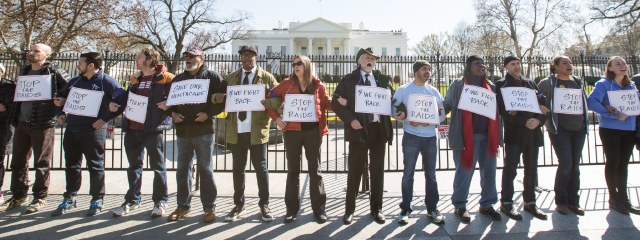Building Identity: A Toolkit for Designing and Implementing a Successful Municipal ID Program
Published By
Center for Popular DemocracyIntroduction
For many residents, municipal ID cards provide meaningful access to civic and economic life that they simply would not otherwise have. Municipal IDs are identification cards issued by, or with the approval of, local governments (cities or counties). They feature the photo of the cardholder, along with other basic identifying information such as address and date of birth. The benefits tied to a municipal ID card vary depending on the locality, but typically all government agencies and officials (including the police) will accept the card as proof of identity in any interaction with a community member. In some cases they may also provide the cardholder with benefits at local businesses, museums, and entertainment venues. Although available to all residents of a city, the cards are particularly valuable for the most vulnerable community members—undocumented immigrants, the homeless, foster youth, the elderly, formerly incarcerated individuals, and others who may have
difficulty obtaining and retaining other government-issued ID.
In February 2014, the Center for Popular Democracy released Who We Are, a report surveying the 6 municipal ID card programs then in effect in the United States. Since then, communities have mobilized to win municipal ID programs in New York City; Newark, NJ; Hartford, CT; and Johnson County, IA. These new programs build on the successes and lessons learned from cities that pioneered the municipal ID concept, and take the idea to new levels—both in terms of scale and scope. For example, New York City’s program, “IDNYC,” has enrolled over 215,000 people in the first six months of operation, and has established partnerships with more than 30 local cultural institutions. Several additional campaigns are also underway in places as diverse as Phoenix, AZ; Charlotte, NC; and Austin, TX.
Several factors make municipal ID such a popular local policy strategy:
■ First, it is a simple and cost-effective way to make a meaningful difference in the daily lives of community members. Without the right form of ID, a person may not be able to open a bank account or cash a check, see a doctor at a hospital, register their child for school, apply for public benefits, file a complaint with the police department, borrow a book from a library, vote in an election, or even collect a package from the post office. Municipal ID removes all of these barriers with a single stroke.
■ Second, municipal ID can be a powerful symbol of inclusion and welcome towards marginalized community members. In all municipal ID cities, undocumented immigrants are now able to report crime without fear that the ID they present will provoke a call to immigration authorities. In New York and San Francisco, thanks to municipal ID, transgender residents now have ID cards that correctly reflect their gender identity. In New York City, Newark and Hartford, homeless residents will be able to access government issued ID without having to have a stable address.
■ Lastly, at a time of total stagnation when it comes to federal law and policy on immigrant rights, economic inequality and racial justice, municipal ID is one way for local policy makers both to fill the vacuum left by Congress, and to begin empowering their constituents to demand the broader systemic change that is so desperately needed.
For a municipal ID card program to fulfill its potential for positive change in the life of the individual as well as the life of the community, the program must be:
■ inclusive (available and accessible to all),
■ protective (of cardholders’ freedom and privacy), and
■ expansive (in the range of services and benefits it provides).
The purpose of this toolkit is to support communities, advocates and policy makers to design and implement municipal ID programs that meet those three criteria. In compiling the best practices outlined here, we relied on the experiences of those directly involved in the creation of municipal ID card programs, as well as the expertise of advocates with particular training in areas of relevance to these card programs (such as financial access, or privacy protection). There are three appendices
to the toolkit. Appendix A contains a model municipal ID bill compiling all of the recommendations presented here into legislative language. Appendix B contains the text of all the municipal ID ordinances enacted to date. And Appendix C contains documents useful for advocating with banks to accept municipal IDs.












